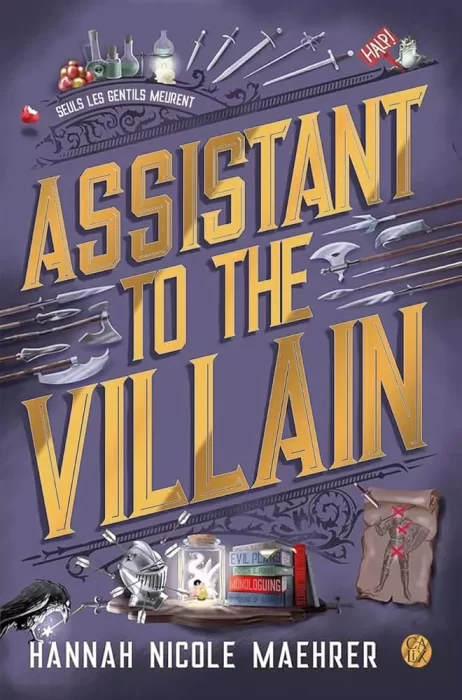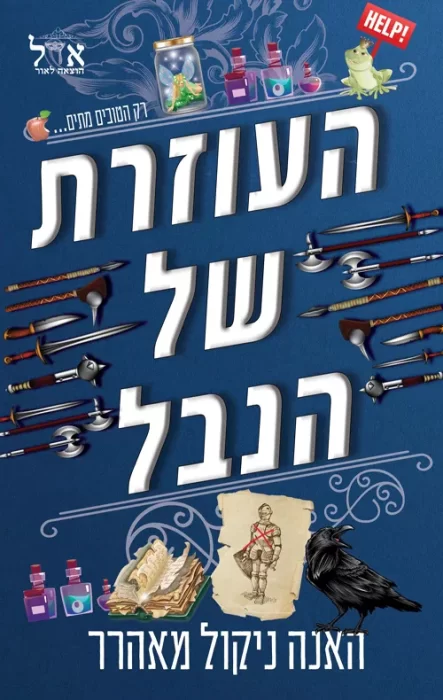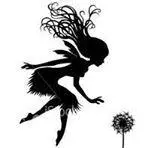For English review, please scroll down.
איווי סייג' חייבת למצוא עבודה. אביה חולה, אמא שלה נעלמה ואחותה הקטנה תלויה בה לפרנסתה. אין לה ברירה אלא להסכים להיות עוזרת של הנבל, האיש הכי ידוע לשימצה ברחבי הממלכה.
איווי מתחילה לעבוד בטירה הקסומה של הנבל, שם היא פוגשת את בקי, מנהלת משאבי אנוש של הטירה, את טטיאנה המרפאת וגם את בלייד גושיקן שאחראי על אילוף חיות קסומות.
איווי, אדם חיובי מטבעו מצליחה להשתלב באווירה, להתמודד עם האתגרים ומצליחה לרסן את הנטיות הרצחניות של הנבל. ואז מישהו מנסה להתנקש בנבל.
איווי שקצת מאוהבת בבוס שלה, בנטיות הדומיננטיות שלו ובאפלה שנוטפת ממנו, מחליטה לעזור לנבל לגלות מי מנסה להתנקש בו וזה לא כל כך פשוט.
אני מצליחה להבין את ההתלהבות מהספר. יחד עם זאת, גם עולם הפנטזיה וגם עולם הרומנטיקה אינם מפותחים מספיק בספר הראשון בסידרה.
מבחינת עולם הפנטזיה, קיימים היסודות הבסיסיים ביותר ולא מעבר לכך. העלילה מתקיימת בתקופה שמאוד מזכירה את ימי הביניים. הוא כולל אבירים, מלכים, יצורים קסומים כמו דרקונים, רמיזות לכשפים וקסמים וטירות. העולם הפנטסטי הזה אינו מורכב או נושא רבדים ואם לרכב על דרקונים זה קסם, אז גם הקסם אינו מורכב או נושא רבדים.
גם מבחינת הרומנטיקה, מדובר על "רומנטיקה נקייה". אווי והנבל שניהם מבוגרים, שנמשכים אבל לא מוכנים להודות בכך. הרומנטיקה בספר הזה מבוססת בעיקר על אווירה והיא לא מתממשת. מערכת היחסים בינהם היא דיאלוג של משמעויות נסתרות.
Assistant to the Villain/ Hannah Nicole Maehrer
Kindle Edition, 2023, 342
דירוג SIVI –
איכות אודיו –

בצד החיובי של הספר, הוא קולח, העלילה שלו קצבית ובעיקר אהבתי את עיצוב הדמויות של איווי ושל הנבל.
איווי היא שמש זורחת חייכנית ונעימה, עם עוקץ בקצה שמכה בכל מי שמעז לגרום לענן לעבור בשמים שלה. מאידך הנבל, מטבעו זועף ונתון למצבי רוח רגזניים, אבל ישנם זמנים שניתן לזהות גם אצלו את השעשוע וההומור. השילוב של שתי הדמויות שלהם עובד היטב.
בנוסף, יש בו ניסיון מעניין לעסוק בטוב וברע. בעיקר להראות את השוליים האפורים שלא כל מה שנראה רע, הוא רע באמת ולא כל מה שניראה טוב, הוא טוב באמת. הניסיון הזה מוסיף עומק לעלילה ומאתגר את הז'אנר הפנטסטי שמעדיף גיבורים חד מימדיים: טובים או רעים.
בקטעים מסויימים קראתי את התרגום לעברית, ובעיניי הוא היה טוב מאוד.
הספר מסתיים בקליף האגר רציני, לכן המשכתי לספר השני, עליו אפרסם סקירה נפרדת בהמשך.
מהדורה עברית:
העוזרת של הנבל/ האנה ניקול מאהרר
הוצאת אדל, 2023, 459 עמודים

Assistant to the Villain #1
דף הסידרה –
Ivy Sage must find a job. Her father is sick, her mother has disappeared, and her younger sister depends on her for support. She has no choice but to agree to become an assistant to the Villain, the most notorious man throughout the kingdom.
Ivy begins working in the Villain's magical castle, where she meets Becky, the castle's HR manager, Tatiana, the healer, and Blade Goshikan, who is responsible for taming magical creatures.
Ivy, naturally positioned, manages to fit into the atmosphere, handle the challenges, and successfully restrain the Villain's murderous tendencies. Then someone tries to assassinate the Villain.
Ivy, who's somewhat in love with her boss, his dominant tendencies, and the darkness that drips from him, decides to help the Villain discover who's trying to assassinate him – and it's not so simple.
I can understand the excitement about the book. However, this first series of books doesn't develop the fantasy world and romance enough.
Regarding the fantasy world, only the most essential elements exist, and nothing is beyond that. The plot takes place in a period very reminiscent of the Middle Ages. It includes knights, kings, magical creatures like dragons, hints of spells and magic, and castles. This fantastic world isn't complex or layered, and if riding dragons is magic, then the magic isn't complex or layered either.
The romance is "clean romance." Ivy and the Villain are both adults who are attracted to each other but unwilling to admit it. The romance in this book is mainly based on atmosphere and doesn't materialize. Their relationship is a dialogue of hidden meanings.
On the positive side, the book flows well, the plot is rhythmic, and I especially loved the character development of Ivy and the Villain.
Ivy is a bright, shining sun, pleasant and smiling, with a sting at the end that strikes anyone who dares to make a cloud pass in her sky. On the other hand, the Villain is naturally grumpy and prone to angry moods, but there are times when you can identify amusement and humor in him, too. The combination of their two characters works very well.
Additionally, there's an interesting attempt to deal with good and evil, mainly to show the gray area—that not everything that seems evil is genuinely evil, and not everything that appears good is perfect.
This theme of moral ambiguity adds another layer of depth to the story, especially in challenging the traditional fantasy tropes of clear-cut heroes and villains.
I read the Hebrew translation in certain sections, and in my opinion, it was perfect.
The book ends with a serious cliffhanger, so I continued to the second book, about which I'll publish a separate review later.
לגלות עוד מהאתר Sivi's Books
Subscribe to get the latest posts sent to your email.


נשמע דומה לעקורה של נעמי נוביק המצוין